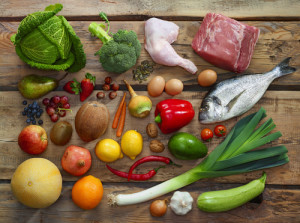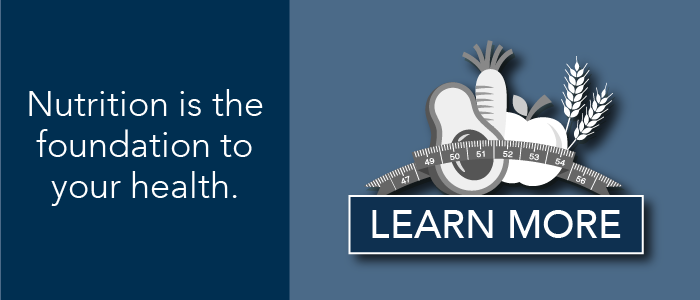THE PALEO DIET IS UNCIVILIZED (AND UNHEALTHY AND UNTRUE)
by Dr. John McDougall
 Low-carbohydrate (low-carb) diets are fueling the destruction of human health and our planet Earth. “Low-carbohydrate” means a diet high in animal foods and low in plant foods. Only plants synthesize carbohy-drates (sugars). The body parts of animals, including red meat, poultry, seafood, and fish, and eggs, contain no carbohydrates. Animal secretions (like mammalian milk) contain sugars synthesized by plants (the cow eats the grass that made the sugar). The original Atkins Diet is the ultimate in low-carb eating. This diet works by starving the human body of carbohydrates in order to induce a state of illness (ketosis), which can result in weight loss. People become too sick to eat too much.
Low-carbohydrate (low-carb) diets are fueling the destruction of human health and our planet Earth. “Low-carbohydrate” means a diet high in animal foods and low in plant foods. Only plants synthesize carbohy-drates (sugars). The body parts of animals, including red meat, poultry, seafood, and fish, and eggs, contain no carbohydrates. Animal secretions (like mammalian milk) contain sugars synthesized by plants (the cow eats the grass that made the sugar). The original Atkins Diet is the ultimate in low-carb eating. This diet works by starving the human body of carbohydrates in order to induce a state of illness (ketosis), which can result in weight loss. People become too sick to eat too much.
In an attempt to remedy the obvious harms to human health caused by very low-carb eating, apologists (including the Atkins Nutri-tionals) have added fruits and non-starchy vegetables to their programs. This effort is supposed to disguise, and compensate for, the unhealthy effects of consuming animal foods at every meal.
The Paleo Diet: The Newest Promoter of Eating the Planet and Its Inhabitants to Death
The Paleo Diet (also referred to as the Paleolithic Diet, the Paleodiet, the Caveman Diet, the Stone Age Diet, and the Hunter-Gatherer Diet) is the most recent and popular approach to weight loss, improved health, and longevity, and is accomplished by eating large amounts of animal-derived foods (which are no-carbohydrate, and high-protein and/or high-fat foods). The Paleo Diet consists mainly of meat, poultry, shellfish, fish, and eggs; non-starchy orange, green, and yellow vegeta-bles; and fruits and nuts. This approach forbids starches, including all grains, legumes, and potatoes. To its credit it also excludes dairy prod-ucts and refined sugars. Salt and processed oils (with the exception of olive oil) are also excluded.
This nutritional plan is based on the presumption that our ancestors, living during the Paleolithic era—a period of time from 10,000 to 2.5 million years ago—were nourished primarily by animal foods. Accord-ing the basic theory behind Paleo dieting, as a result of more than two millions of years of evolution, we are now genetically adapted to eat what the hunter-gathers ate—mostly animal foods.
The Paleo Diet book (revised 2011) is “the bible” for followers of this approach (page numbers from this book are found in parenthesis in this article). Written by Loren Cordain, PhD, Professor in the Depart-ment of Health and Exercise Science at Colorado State University, the Paleo Diet is said to be “the one and only diet that ideally fits our ge-netic makeup.” (p 3) The author claims that every human being on Earth ate this way for the past 2.5 million years, until the dawn of the Agriculture Revolution (10,000 years ago), when grains, legumes, and potatoes were introduced worldwide. According to Dr. Cor-dain, “…there wasn’t a single person who did not follow the Paleo Diet.” (p 71). With the development of agriculture about 10,000 years ago, “Paleo experts” teach that human health and longevity plummeted. By no coincidence, the Agriculture Revolution marks the dawn of civilization. “Civilization” encompasses our advanced state of intellectual, cultural, and material development, marked by progress in the arts, music, sciences, languages, writing, computers, transportation, and politics.
“If You Repeat a Lie Often Enough, It becomes the Truth”
 Teachers of Paleo nutrition claim our ancient ancestors were hunter-gathers with an emphasis on hunting, regardless of what the bulk of current scientific research reports. They base their hypothesis largely upon a flawed review of contemporary hunter-gathers.
Teachers of Paleo nutrition claim our ancient ancestors were hunter-gathers with an emphasis on hunting, regardless of what the bulk of current scientific research reports. They base their hypothesis largely upon a flawed review of contemporary hunter-gathers.
Primates, including humans, have practiced hunting and gathering for millions of years. I know of no large populations of primates who have been strict vegans (ate no animal foods at all). However, plants have, with very few exceptions, provided the bulk of the calories for almost all primates. This truth has been unpopular in part because of a well-recognized human trait, sexism. Grandparents, women, and children did the gathering, while men hunted. Glory always goes to the hunters.
When asked about the commonly held idea that ancient people were primarily meat-eaters, the highly respected anthropologist, Nathanial Dominy, PhD, from Dartmouth College responded, “That’s a myth. Hunter-gathers, the majority of their calories come from plant foods…meat is just too unpredictable.” After studying the bones, teeth, and genetics of primates for his entire career as a biological anthropologist, Dr. Dominy, states, “Humans might be more appropriately described as ‘starchivores.’”
Paleo diet proponents spare no effort to ignore and distort science. The general public is at their mercy until they look for them-selves at recent publications from the major scientific journals:
* Research published in the journal Nature (on June 27, 2012) reports that almost the entire diet of our very early human ancestors, dating from 2 million years ago, consisted of leaves, fruits, wood, and bark—a diet similar to modern day chimpanzees.
* According to research presented in a 2009 issue of Science, people living in what is now Mozambique, along the eastern coast of Africa, may have followed a diet based on the cereal grass sorghum as long as 105,000 years ago.
* Research presented in a 2011 issue of Proceedings of the National Academy of Science shows that even the Neanderthals ate a variety of plant foods; starch grains have been found on the teeth of their skeletons everywhere from the warm eastern Mediterranean to chilly northwestern Europe. It appears they even cooked, and otherwise prepared, plant foods to make them more digestible—44,000 years ago.
* A 2010 issue of the Proceedings of the National Academy of Science reported that starch grains from wild plants were identified on grinding tools at archeological sites dating back to the Paleolithic period in Italy, Russia, and the Czech Republic. These findings suggest that processing vegetables and starches, and possibly grinding them into flour, was a widespread practice in Europe as far back as 30,000 years ago, or even earlier.
Falsehoods leading the general public to choose foods that threaten our very existence have been challenged for decades, but as I have said before, people like to hear good news about their bad habits; so the Paleo Diet continues to get a highly visible platform with too little public debate.
The Hunter-gather Diet Is Repulsive
Dr. Cordain writes, “For most of us, the thought of eating organs is not only repulsive, but is also not practical as we simply do not have access to wild game.” (p 131). In addition to the usual beef, veal, pork, chicken, and fish, a Paleo follower is required to eat; alligator, bear, kangaroo, deer, rattlesnake, and wild boar are also on the menu. Mail-order suppliers for these wild animals are provided in his book.
More than half (55%) of a Paleo dieter’s food comes from lean meats, organ meats, fish, and seafood. (p 24) Eating wild animals is preferred, but grocery store-bought lean meat from cows, pigs, and chickens works, too. Bone marrow or brains of animals were both favorites of pre-civilization hunter-gathers. (p 27) For most of us the thought of eating bone marrow and brains is repulsive. But it gets worse.
No mention is made by Paleo experts about the frequent and habitual practices of nutritional cannibalism by hunter-gather societies. (Nutritional cannibalism refers to the consumption of human flesh for its taste or nutritional value.) Archeologists have found bones of our ancestors from a million years ago with defleshing marks and evidence of bone smashing to get at the marrow inside; there are signs that the victims also had their brains eaten. Children were not off the menu. And we are supposed to eat the favorite meats of our uncivilized, pre-Agriculture Revolution, hunter-gather, ancestors?
The Paleo Diet Is a Nutritional Nightmare
By nature, the Paleo Diet is based on artery-clogging saturated fats and cholesterol, and bone-damaging, acidic proteins from ani-mal foods. Respected researchers find that those modern-day hunter-gather populations who base their diets on meat, such as the Inuits (Eskimos), suffer from heart disease and other forms of atherosclerosis, and those modern-day hunter-gathers who base their diets on plant foods (starches) are free of these diseases. Osteoporosis, from their high animal food-based diets, is also epi-demic among meat and fish consuming hunter-gathers, specifically the Inuits.
In an attempt to defend eating animals, Paleo teachers believe the harmful nutrients from these foods are counteracted by the addition of non-starchy fruits and vegetables, and nuts and seeds.
Furthermore, according to Dr. Cordain, a diet very high in animal protein foods would cause a person to become seriously ill with nausea, vomiting, diarrhea, and eventually death from protein toxicity (also known as “rabbit starvation”). (p 105). For most people the dietary ceiling for protein is 200 to 300 grams a day or about 30 to 40 percent of the normal daily calorie intake. The Paleo Diet is as high as 35% protein. (p 24) Contradicting his warnings, Dr. Cordain consistently and frequently emphasizes that “Protein is the dieter’s friend.” (p 48). Eating animal-derived foods causes our most common diseases for many well-established reasons, including the indisputable facts that they contain no dietary fiber, are filthy with disease-causing microbes (including mad cow prions, and E. coli and salmonella bacteria), and contain the highest levels of poisonous environmental chemicals found in the food chain. Remember, disease-causing red meats, poultry, fish, and eggs make up 55% of the Paleo Diet.
The June 21, 2012 issue of the British Medical Journal presented the latest updates on the long-term health hazards of low-carbohydrate, high-protein diets, and reported that, “In particular, women had a 5% higher incidence of cardiovascular disease (heart disease) for each tenth of an increase in the low carbohydrate-high protein score, yielding a 62% higher incidence among women in the highest categories of low carbohydrate-high protein diets compared with the lowest.” These low-carb diets, from Atkins to Paleo, are simply dangerous.
Paleo Nutrition Contradicts the Obvious: Most People Have Lived on Starch-based Diets
 All large populations of trim, healthy people, throughout verifiable human history, have obtained the bulk of their calories from starch. Examples of once-thriving people include Japanese, Chinese, and other Asians eating sweet potatoes, buckwheat, and/or rice; Incas in South America eating potatoes; Mayans and Aztecs in Central America eating corn; and Egyptians in the Middle East eating wheat. There have been only a few small isolated populations of primitive people, such as the Arctic Eskimos, living at the extremes of the environment, who have eaten otherwise.
All large populations of trim, healthy people, throughout verifiable human history, have obtained the bulk of their calories from starch. Examples of once-thriving people include Japanese, Chinese, and other Asians eating sweet potatoes, buckwheat, and/or rice; Incas in South America eating potatoes; Mayans and Aztecs in Central America eating corn; and Egyptians in the Middle East eating wheat. There have been only a few small isolated populations of primitive people, such as the Arctic Eskimos, living at the extremes of the environment, who have eaten otherwise.
Therefore, scientific documentation of what people have eaten over the past thirteen thousand years convincingly supports that starch, not animals, is the traditional diet of people.
Men and women following diets based on grains, legumes, and starchy vegetables have accomplished most of the great feats in history. The ancient conquerors of Europe and Asia, including the armies of Alexander the Great (356 – 323 BC) and Genghis Khan (1162 – 1227 AD) consumed starch-based diets. Caesar’s legions complained when they had too much meat in their diet and preferred to do their fighting on grains. Primarily six foods: barley, maize (corn), millet, potatoes, rice, and wheat, have fueled the ca-loric engines of human civilization.
The longest living populations on planet Earth today live on starch-based (low-animal food) diets. These include people from Okinawa, Japan; Sardinia, Italy; Nicoya, Costa Rica; Ikaria, Greece; and the Seventh Day Adventists in Loma Linda, California, who live in what are called the “Blue Zones.”
The most effective diets ever used to cure people of common day illnesses, like coronary heart disease, type-2 diabetes, hyperten-sion, hypercholesterolemia, arthritis, and obesity minimize animal foods and require people eat the bulk of their calories from starches, including grains, legumes, and potatoes (foods forbidden to Paleo eaters). Medical giants in starch-based diet-therapy, include Walter Kempner MD, the founder of the Rice Diet at Duke University; Nathan Pritikin; and Roy Swank, MD, founder of the dietary treatment of multiple sclerosis at Oregon Health & Science University.
Widespread Adoption of the Paleo Diet Would Soon Become an Ecological Disaster
The 2006 United Nations’ report Livestock’s Long Shadow: Environmental Issues and Options concludes: “Livestock have a substan-tial impact on the world’s water, land and biodiversity resources and contribute significantly to climate change. Animal agriculture produces 18 percent of the world’s greenhouse gas emissions (CO2 equivalents), compared with 13.5 percent from all forms of transportation combined.
This report (Livestock’s Long Shadow) from the World Health Organization is a conservative estimate of the destruction caused by the very foods that the Paleo Diet recommends in abundance. Calculations by the World Watch Institute find that over 51 percent of the global warming gases are the result of raising animals for people to eat. A recent report from U.S. Geological Survey esti-mates that it takes 4,000 to 18,000 gallons of water to produce the beef used to make one juicy hamburger. Every person that Paleo gurus convince to follow an animal food-based diet brings us one more step closer to the end of the world, as we know it.
Civilizations Could Not Have Thrived on the Paleo Diet
According to Dr. Cordain, “The Agriculture Revolution changed the world and allowed civilizations—cities, culture, technological and medical achievements, and scientific knowledge—to develop.” (p 43) In other words, if people had remained on a diet of most-ly animal foods (assuming our ancestors actually did), we would still be living in the Stone Age. Fortunately, the Agriculture Revolu-tion, with the efficient production of grains, legumes, and potatoes—the very foods forbidden by the Paleo Diet—allowed us to become civilized.
Dr. Cordain finishes his 2011 revision of his national best-selling book The Paleo Diet by warning, “Without them (starches, like wheat, rice, corn, and potatoes), the world could probably support one-tenth or less of our present population…” (p 215) Choose 10 close friends and family members. Which nine should die so that the Paleo people can have their way? There is a better way and that is The Starch Solution.
2012 John McDougall All Rights Reserved Dr. McDougall’s Health and Medical Center P.O. Box 14039, Santa Rosa, CA 95402 http://www.drmcdougall.com


